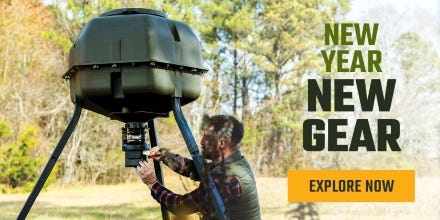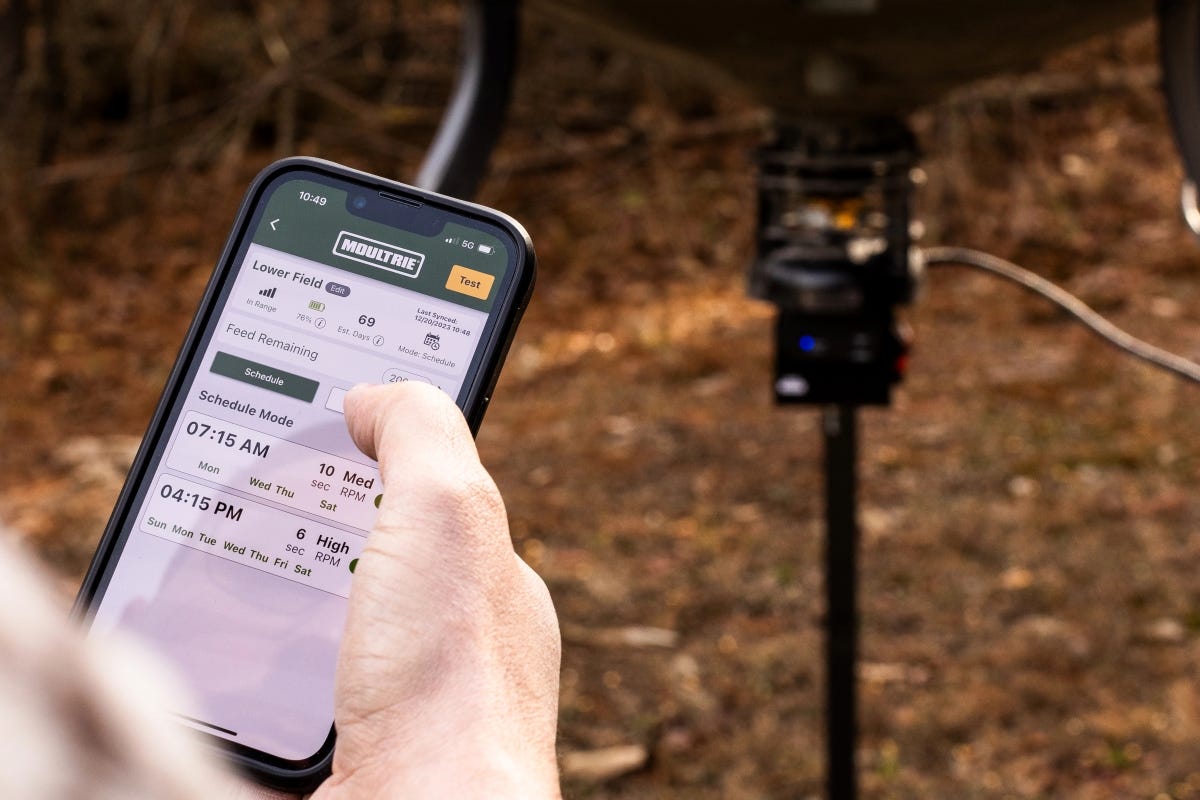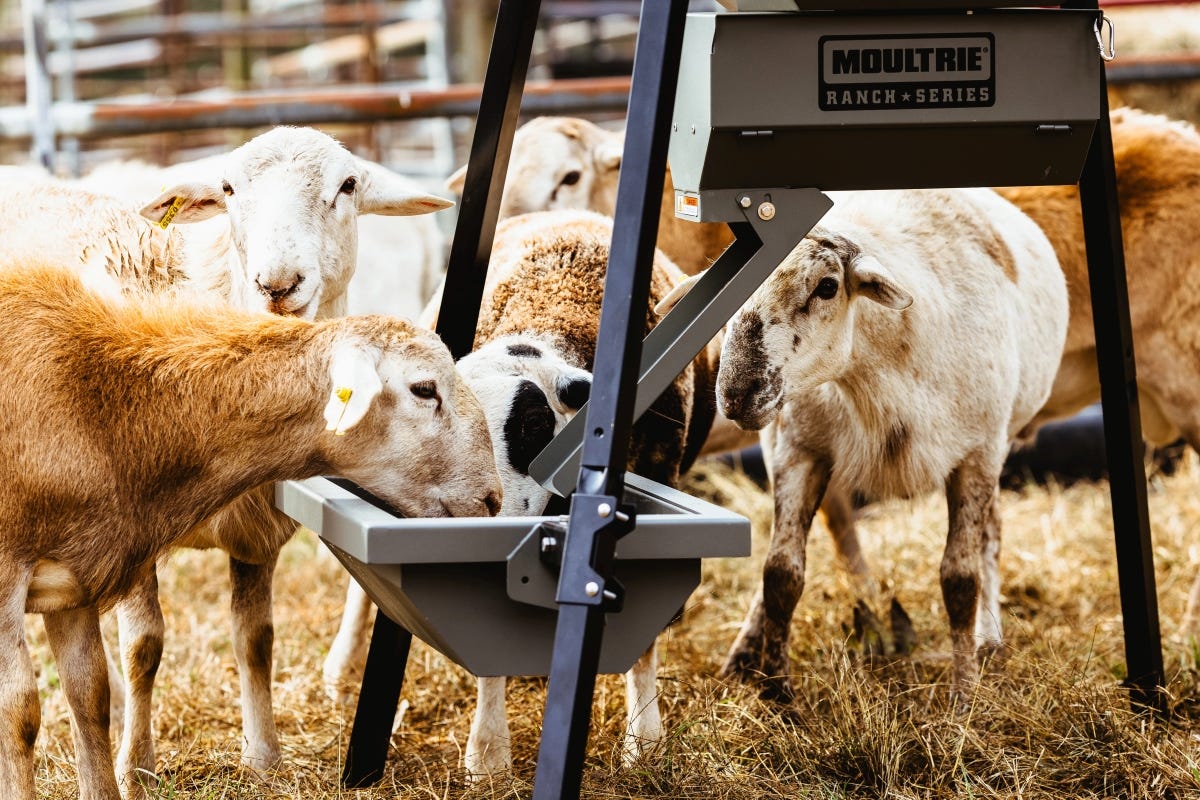- Feb 16, 2021
How to Start a Deer Feeding Program
A deer feeding program can be a pivotal part of growing a healthier deer herd. When you ensure the deer on your property have the right nutrients throughout the year, they get bigger and stay healthier. Keep in mind a few tips to start your plan:
1. Provide the Best Nutrition
Deer need a few key ingredients to thrive and grow during the year. Incorporate these nutrients into your feeding program, and you'll set yourself up for excellent results:
- Protein: You'll want to provide a stable protein source for them to build their muscle and bone strength — planting soybeans or feeding protein pellets are excellent options.
- Fiber: Good news here is you won't have to do anything as native vegetation and planted crops have plenty of fiber. However, if feeding large amounts of corn in the winter, ensure that deer have plenty of woody browse or alfalfa hay to eat as well or the deer can develop a condition called acute acidosis, which is a death sentence.
- Carbohydrates: Deer need carbohydrates such as corn and many fall food plot blends to give them energy as the seasons change to fall.
- Minerals: Key minerals including calcium and phosphorous are critical for growing strong bones, antlers, and milk production for fawns, while sodium helps extract the large amount of water intake from green plants the deer are eating.
2. Choose the Proper Time
Check your state's legal regulations to ensure you're adhering to any rules regarding when and where you can feed your wildlife. Where permitted, you can put out food year-round to supply their nutritional needs. Pay attention to months when the deer consume the food most heavily and tailor your feeding program to your regional game's eating habits.
3. Get the Right Feed for the Season
Deer have different dietary requirements throughout the year, so it's important to know what they need at what time. You can follow a general schedule like this one for how often to feed deer:
- Spring: Spring is one of the best times to feed protein to whitetail deer. Make sure your deer population gets protein as they come out of winter. With the does preparing to give birth and the bucks beginning to grow their antlers, this nutrient is vital to building muscle and antler.
- Summer: A protein-rich diet is still critical for fawns' and bucks' growth, and minerals such as calcium are crucial for furthering their development.
- Fall and winter: As you move into late summer and fall, keep a steady supply of carbohydrates (planted food plots and corn) to help prepare deer for winter.
4. Watch for Results
What results should you expect from a successful feeding program? You can watch for some key signs to evaluate your program's progress:
- Increased deer population: When you're providing the right nutrients for your local wildlife, they'll naturally reproduce faster and add healthy fawns to the population. You'll also draw in neighboring deer, too.
- Bigger body size: Adequate protein sources and other key nutrients help deer reach their genetic potential and develop a larger body and muscle mass.
- Larger antler size: With calcium, phosphorous and other minerals and nutrients, bucks can reach their potential for antler growth.
HOW TO GROW BIGGER BUCKS
When it's time for hunting season, every hunter wants to chase that big buck. If you're looking for ideas for how to get big bucks on your property, you'll find there are several ways you can make your land an excellent environment for deer to live and grow.
The right habitats and feed will get deer to stay in your area and help them grow even bigger. We've put together some tips on how to attract big bucks so you can start getting them to show up on your property:
1. CREATE THE RIGHT HABITAT
The first step to cultivating big deer on your land is to develop the right habitat for them. Deer need food, water and cover. So, you'll want to spend your time, money and effort on the portions of the habitat that your property lacks. Say water isn't an issue, but there isn't much year-round food or cover, then you'll be better suited creating and planting food plots and harvesting timber to get sunlight hitting the ground in order to grow thick bedding cover.
When you know where deer are bedding and feeding, you'll know where to hunt them. Make sure any nearby stands are well-concealed and won't give you away.
2. CULTIVATE HEALTHY SOIL
Research suggests a correlation between healthy soil and big deer because it helps grow nutritious plants deer will want to eat. Growing the right forage on your property can contribute to increased deer size and health. If you plan to set up a food plot for deer, be sure to do soil tests first.
Most food plot crops thrive in a neutral soil environment. Most soils are naturally acidic, so you'll need to lime your soil if you find it has a higher acidity than ideal.
3. PROVIDE NUTRITIONAL FEED
As mentioned above, one key for how to grow big deer on small land or a bigger plot is giving them the right nutrition. Soybeans, alfalfa and assorted broadleaf plants are ideal for deer forage, so make it easy to grow this vegetation on your property. Managing the canopy cover over your food plot and keeping the soil healthy will help these protein-rich plants flourish and draw in deer.
Setting up feeders at strategic locations is a great way to keep deer around and make sure they're getting plenty to eat.
Create an Effective Deer Feeding Program With Moultrie Products
If you want to get a prime deer population on your property, ensure you have the right feeding solutions. With Moultrie deer feeders, you can efficiently provide the proper nutrients to your local wildlife. Explore our deer feeders and deer attractants to find the best option!
*Last Updated: 10/13/2021






